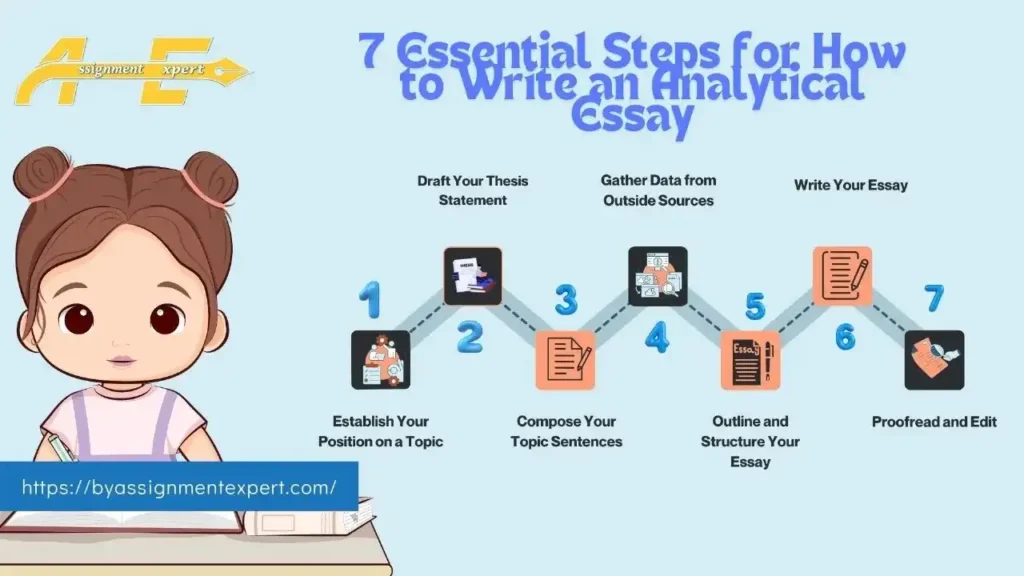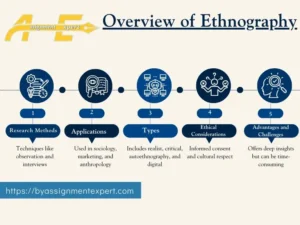Understanding the complexities of preparing analytical essays is essential for boosting your critical thinking skills. It can benefit you through your professional efforts. Analyzing different parts of an analytical essay can enhance your ability to organize and prioritize the most comprehensible sections.
This type of essay outlines the methodology for solving each component and provides a step-by-step guide for structuring. After reading and perfectly following this analytical essay blog, you will be able to attain exceptional essay.
What actually an analytical essay is?
An analytical essay evaluates a topic by presenting a well-supported argument backed by relevant evidence. While dominant in academic writing, analytical essays can also be found in trade journals, newspapers, and other forms of media.
Normally focusing on literary works, films, art, or present issues, the essay spins around a central thesis statement concerning the subject, which is consequently supported by secondary sources that work as evidence for the thesis.
Read related blog: How to Write an Argumentative Essay?
What makes a good analytical essay?
A good analytical essay is distinguished by several key attributes that ensure it is both insightful and well-structured. Here are the essential qualities:

Clear and Focused Thesis Statement
The essay should begin with a strong thesis statement that clearly articulates the central argument or analysis. This statement should be specific and debatable and serve as the foundation for the entire essay.
Well-Organized Structure
A fine analytical essay admires a sound composition with a transparent introduction, body paragraphs, and conclusion. Each section should contribute to the development of the thesis, with the body paragraphs presenting distinct points.
In-depth Analysis
Rather than basically cutting the topic, a strong analytical essay reaches into the subject matter, cut into its element parts to explore fundamental themes or concepts. The analysis should be full, offering original understandings that go outside surface-level examinations.
Use of Evidence
Supporting evidence is fundamental in an analytical essay. The essay should combine primary and secondary sources to demonstrate its arguments. These facts should be integrated smoothly into the analysis to maintain academic integrity.
Critical Thinking
The essay should express critical thinking by assessing different viewpoints, considering counter arguments, and reflecting on the wider consequences of the analysis. The writer should be involved with the material in a way that shows a deep and thoughtful understanding of the topic.
Cohesive and Coherent Writing
The essay should be written in a clear, brief, and consistent method. Every paragraph should flow practically from one to the next, with effective transitions that continue the reader’s understanding.
Read related blog: Best way to write a character analysis essay
How to Structure an Analytical Essay
Constructing a convincing paper begins with detailed organization and the efficient presentation of arguments.
Introduction
Hook: Draw the interest of the reader.
Related Data: Offer perspective for the topic.
Thesis Assertion: Present the central claim.
Start by drawing the reader’s attention and clearly stating the topic. Provide the required background information, outline the purpose of the essay, and introduce the arguments you will make. The opening sentence ought to be persuading, conceivably a shocking truth, or a thought-provoking address.
Body Paragraph 1
Topic Sentence: Present the fundamental thought of the section.
Supporting Evidence: Offer concrete proof to substantiate your thesis.”
Body Paragraph 2
Topic Sentence: Highlight the main focus of this paragraph.
Supporting Evidence: Offer concrete proof to substantiate your thesis
Every paragraph should begin with a clear topic sentence that guides the reader. Introduce proof that proves your thesis, focusing on a single issue per paragraph. Conclude each section by briefly rehashing the fundamental point to make a smooth move to the other one. This method ensures clarity and consistency throughout your argument
Conclusion
Summary of Major Points: Recap the key arguments made.
Restate the Thesis: Reaffirm your central claim.
Main Takeout: Give emphasis to the consequence of your valuation.
Repeat the thesis, sum up the significant topics from the body paragraphs, and suggest understandings into the consequence of your evaluation. Reflect on the importance of the topic and how your analysis contributes to understanding it, leaving a persistent impact on the reader.
7 Essential Steps for How to Write an Analytical Essay
To tackle an analytical essay successfully, follow these structured steps and focus on the key components:
- Establish Your Position on a Topic
- Draft Your Thesis Statement
- Compose Your Topic Sentences
- Gather Data from Outside Sources
- Outline and Structure Your Essay
- Write Your Essay
- Proofread and Edit
Establish Your Position on a Topic
Depending on the assignment, you may either be provided with a topic or need to select one yourself. Though selecting a topic offers productive freedom, it can also be frightening. In such cases, select for a subject you are commonplace with and truly interested in. Most importantly, ensure the topic provides ample room for discussion and debate.
Although the topic should be as specific as possible, the primary focus lies in establishing your perspective on the work you are analyzing. Start by conceptualizing to way better get your considerations and impressions on the subject, but eventually, you ought to create a contention that best verbalizes your investigation.
Example of Topic Selection:
If your class has considerably discussed “To Kill a Mockingbird” as a coming-of-age story, you might have abundant notes and material supporting the idea that it’s a narrative about Scout’s growing pains. However, this perspective may not be particularly provocative if it’s widely accepted. Instead, consider a more nuanced stance.
Building on the idea of scout growing up, you could argue that she is a headstrong young woman who defies societal expectations. This is particularly intimidating in her small Southern town, rife with racism, classism, and sexism during the mid-20th century. This perspective not only challenges the status quo but also invites deeper discussion.
Draft Your Thesis Statement
A thesis statement is a focused claim that presents your central argument or thesis about your topic, usually expressed in a single sentence. As you improve your essay, remain to state your thesis to be as sensible as possible.
Example of Thesis Statement:
Amid the grave injustices of the adult world, scout realizes during her transition into womanhood that she will always be silenced. As she struggles to find her voice, she is persistently reminded that, as a woman, she shouldn’t even have one.
Compose Your Topic Sentences
With an open recognition of your claim, define how your essay will support it. Your essay will consist of body paragraphs connected by topic sentences—write these topic sentences as if they are the framework of your essay. If your paper is prolonged, a topic sentence may go beyond a single paragraph. Laying out your thesis and topic sentences can serve as a functional outline, though you may choose to draft a more detailed outline that also maps where you’ll incorporate outside sources.
Topic Sentence Example:
Scout defiantly rejects gender norms, from the clothes she wears to the way she interacts with people even in the name she uses.
Gather Data from Outside Sources
An analysis often requires the support of outside sources. The information you collect should reinforce your claims. Keep the following in mind:
Use Primary or Secondary Sources: A primary source is a direct account of the topic. For instance, quoting scout’s line about not being a lady if she wears breeches would be a primary source. A secondary source could be an article discussing the author’s intent in writing the book.
Choose to Quote or Paraphrase: Depending on how closely the material aligns with your argument, you may quote the text directly or paraphrase it.
Outline Cite: “I felt the squeezed dividers of a pink cotton jail closing in on me, and for the minute time in my life I thought of running truant. Immediately.”
Example Paraphrase: Scout later expresses how isolated she feels when the boys no longer wish to play with her, despite her efforts to reject anything girlish.
Use Reputable Sources: Reliable sources include peer-reviewed journals, regulated studies, or materials created by respected experts in the field.
Cite Your Sources: Always cite your sources so readers can verify the information that supports your claims. Most colleges require adherence to Advanced Dialect Affiliation (MLA) rules.
Outline and Structure Your Essay
With your thesis statement, topic sentences, and chosen evidence, you have all the pieces necessary to begin writing. Drafting an outline can help you organize your thoughts and supporting evidence will appear in your essay. Your outline allows you to visualize how each element will function that leaves a lasting impression.
Write Your Essay
With all components in place, begin drafting your essay. Center on developing the organization you have placed to make a rational first draft. Don’t worry too much about small errors. Your goal at this stage is to develop a working draft.
Proofread and Edit
The editing process is as crucial as the writing process. During editing, you’ll refine any overlooked issues, whether they are minor mechanical problems or points you want to explore further in the final version.
Writing should prevent improbability and be free of avoidable vocabulary. In summary, a good analytical essay is one that is well-structured and proved by strong evidence in a clear and connecting method.
Frequently Asked Questions about Analytical Essay
How can I improve my analytical essay writing?
Concentrate on upgrading your thesis, providing deeper analysis, and using strong evidence. Safeguard clear, organized writing and address counter arguments to improve your essay.
How to write an A+ analytical essay?
Begin with a clear, forceful thesis, organize your essay logically, and prove your arguments with real evidence. Clarify critical thinking and polish your writing for precision and consistency.
How to write a good sample of an analytical essay?
Start off with a well-defined thesis, arrange your essay with excellent topic sentences, and use proofreading to support your evaluation. End by highlighting your leading points and presenting understanding thoughts.
















